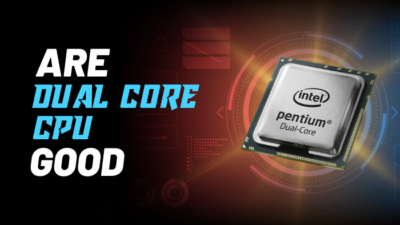If you start noticing your PC lagging more often, which was not a usual occurrence earlier. And later examined with a stress test using AIDA64 & Cinebench R23 shows your computer is unstable. There is a high chance CPU Overheating is causing such issues.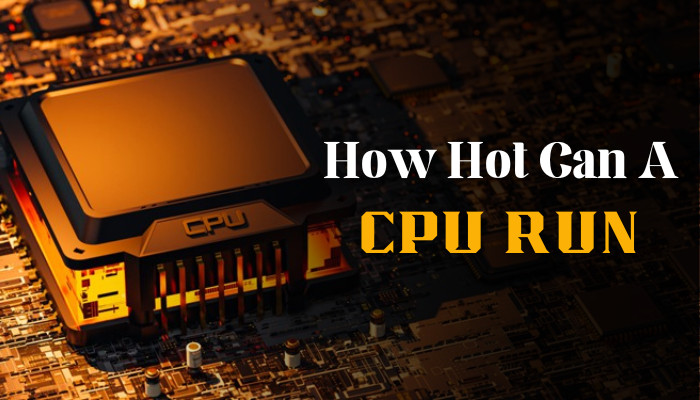
Every user should know their processor’s capability and which temperature is suitable for their CPU. And also, continuously monitor CPU heat, which is a good practice to retain the Processor’s longevity.
In this article, I’ll clarify the reasons for CPU overheating and the maximum temperature limit of different processors.
Why Does the CPU Produce Heat?
The computer processor is made of silicon and has billions of transistors. The primary reason for thermal energy reproduction by a processor is electricity-flow through transistors. The electricity resistance creates more heat as you impose more workload on the processor.
Although heat produced by a processor is usual, the temperature should be within a specific limit. Or else excessive heat can gradually harm the processor, which may cost longevity and performance. Silicon is sensitive to heat; there is a certain chance overheating can melt silicon die as well as transistors.
What is the Maximum Temperature For a CPU?
The temperature of a Processor varies over many circumstances and usage. Manufacturers release different tier processors for the divergent consumer markets. And also update the build architecture over generations or time. So each one heats up differently while used.
Check out our in-depth guide on CPU temperature to learn more about the topic on hand.
As a universal suggestion, statistics say. “It’s the idle temperature for a CPU is 40-50℃ on a normal workload, and 70-80℃ is too hot for a CPU during gaming and heavy workload.”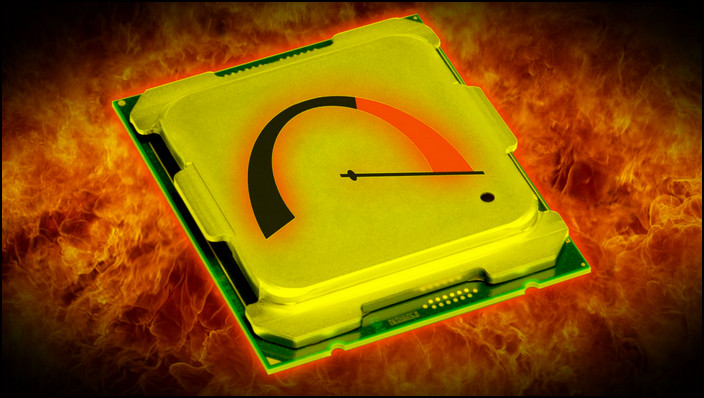 But you are seeking a more satisfactory answer, right?
But you are seeking a more satisfactory answer, right?
Here are the standard heat limit for different processors:
Manufacturer Difference
Intel & AMD are the primary CPU manufacturers that have produced numerous processors from around 1971 till now. Two distinct manufacturers have multiple architecture designs, sockets, clock speeds, graphics, and models.
Depending on those attributes, each processor generates heat at a different level. Intel still has relatively bigger nanometer-sized chips but is more efficient. That’s why it creates less heat than its AMD counterpart.
But some AMD processors come with a Powerful iGPU built into processors directly, called APUs, which require more voltage to run, causing more heat.
Intel Processors Safe temperature limit is between 70℃ to 80℃ (158-176℉). But a temperature rise above this limit might damage your processor gradually.
AMD processors usually produce a little more heat than intel, meaning the safe limit is slightly elevated between 72.5℃ to 82.5℃ (162.5-180.5℉).
Generation and Architectural Difference
Processors released in ancient (Sandy Bridge) times aren’t similar to the latest ones. Like newer generation processor(Raptor Lake) comes with more improvement, efficiency, and performance.
An old-generation processor efficiently controls heat without reducing performance, if not increasing it.
Multi-core and Multi-thread performance significantly improved over time, spreading the workload and heat to multiple cores. So, you will need less electricity on the latest processor to gain much performance, generating less heat.
Furthermore, a processor lineup named APU holds a graphics controller as an extra. That’s why APU produces more heat than a CPU. Not only the heat, but there also are more things worth knowing about CPU vs APU.
User Variation
Playing games, watching Blu-rays, ripping, rendering, and sharing files can impose immense pressure on the processor and causes a lot of heat.
The average users don’t use CPU that much, but such users can easily infect OS with malware, which uses enormous resources in the background and causes overheating.
How Does Temperature Damage the CPU?
We all know heat is the enemy of electronics; the same goes for processors. As Processor-Die is made of silicon and has billions of transistors that trespass enormous amounts of electricity through, creating vast amounts of resistance.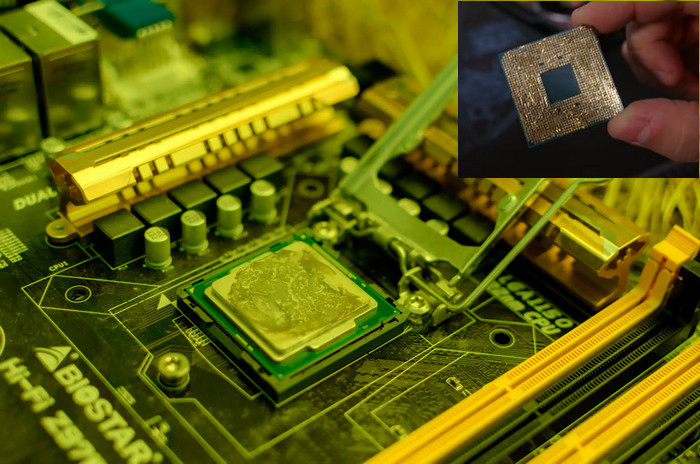
Therefore, you have no choice but to let the CPU Generate heat to get your job done. The only thing to do is counteract. There are many ways you can gain control over your CPU temperature. But the processor will lag due to overheating & start degrading.
An overheated processor may not show you the buggy result in the first place, but it will act up today or tomorrow, leaving you no choice. You might notice weird artifacting issues due to CPU damage.
Additionally, if you’re wondering whether it’s possible for a CPU to melt due to overheating, check the embedded article.
What are the Reasons for High CPU Temperature?
There are many reasons behind the temperature rise, but some of those are obvious & some are maintenance mistakes. Dust makes cooling insufficient. Wrong OC settings, malware attacks, and ambiance are some obvious causes. Overheating occurs for additional reasons.
On a side note, here’s how to know if your CPU is overheating.
Here are the precise reasons for the rise in CPU temperature:
Faulty OC settings
Computer users often hear the term OC if they are interested in pushing performance further. OC, also known as Over-Clocking, does not magically improve performance. You have to pass a very specific amount of voltage to gain the desired performance, which is often mistaken if you don’t know the exact solution.
So, if you make a mistake in setting a particular voltage, end up with excessive heat and instability.
Improper Cooling System
In most cases, the CPU fan that comes with the processor is not efficient enough to achieve the most performance. So, better if you buy an aftermarket cooler to squeeze more performance. But some processors like AMD Ryzen and Intel X series require water cooling to reach their absolutely powerful state.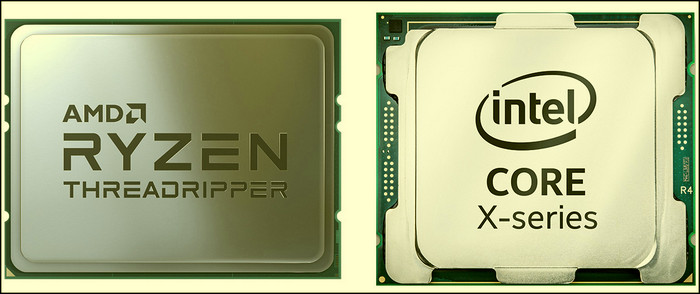
Dried Thermal Paste
Consider you have filled all the criteria of a processor needed to Overclock, but it is still getting hot and performing poorly. There could be an issue with thermal paste, which is crucial to ensure contact between the processor and heatsink to transfer heat.
Thermal paste is used to fill the gaps between the surface of the Heatsink & Processor at the atomic level to conduct heat from the CPU to Heatsink. With Old and dried thermal paste, you’ll notice the CPU temperature jumping up & down.
Bad Emplacement of PC
The position of your PC also determines the performance as airflow, and the flowed air quality also plays a significant part in cooling the CPU down.
If you keep your PC in a warm place, like in an airtight place or under sunlight near a window, you are letting the warm air pass through the heatsink. And it will make your CPU more heated rather than cooling down.
Dirty CPU Fan & Radiator
Dirt in a radiator or fan directly blocks the airflow through a heatsink needed to cool down CPU temperature. Plus, you must clean dust filter to ensure proper airflow in Chassis. Else it makes the surrounding ambient warmer, which is very problematic.
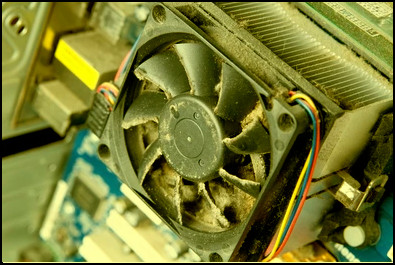
Insufficient & Non-PWM Fans
Chassis fans and CPU fans are applied to take chilled air in and exhaust the warm air out, which passes through the heatsink. Although there are some subtle differences between CPU fans vs. Chassis Fans, the PWM feature is a must for CPU Fans.
You’re making your case interior worse if you don’t have sufficient fans installed. If you have fans to intake air but not enough to exhaust, It’s threatening for the CPU.
Poor Airflow Through Chassis
You have installed the maximum fan your chassis can hold and a good enough CPU cooler. But the CPU is still hot! What is the issue? You might wonder.
Most probably, you haven’t installed those fans in the right direction.
Fans installed in front in intake fans and fans of back position usually exhaust air. It’s better to have the same amount of fans for both intake & exhaust.
Inefficient Ventilation of Laptop
Most laptop user operates their laptop seated on their lap or bed & even sometimes on a pillow. Laptop air vents are mostly situated underneath the laptop, so if your laptop is sitting on a pillow or bed, you are blocking the airflow. A laptop cooler or stand gives relief to such issues.
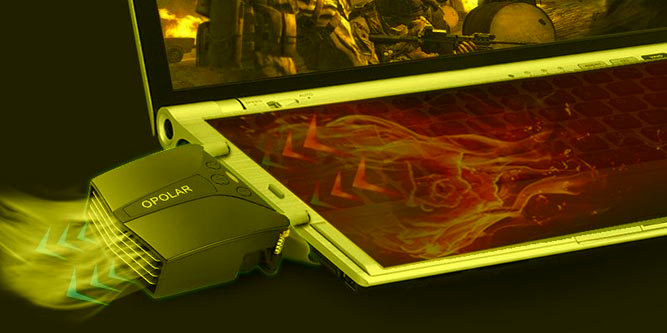
Background App & Malware
Startup apps and background-allowed processes use a vast amount of computer hardware resources, which creates pressure on the CPU. Unnecessary apps and process elimination can chill your CPU a bit.
Elsewise you may feel thrilled to know that you CPU can get infected with virus easily.
Furthermore, the malware significantly impacts the CPU, continuously making the system unusable and damaging hardware. Check if your system has any generic named software installed. Terminate those ASAP if not needed.
Outdated Drivers & Operating Systems
Buggy OS and outdated drivers also cause overheating. Because manufacturers always try to fix issues with drivers and cumulative updates. However, some updates come with bugs, it’s safe to stay on the latest trend, which is often fixed by developers soon.
Update your OS and Driver to experience a better environment in the system, which also fights against malware.
FAQs
Is 90 Celsius hot for a CPU?
90-degree celsius is quite hot for a CPU which may damage the CPU chip. Although the CPU lowers its clock speed to prevent damage, the user should be cautious also.
How long does thermal paste last?
Thermal paste usually stays well for 2-4 years, but it’s better to reapply new thermal paste if the heatsink is removed to wash.
How to check CPU temp?
You can check your CPU and GPU temperature using MSI Afterburner in the Game. And almost all motherboards provide different utility software to monitor CPU temperature.
How do I know if my CPU is overheating?
You will notice a significant drop in performance, and in the worst case, your PC will shut down to survive damage.
Conclusion
Processors are the most workload-handling component, which shows the significance of the CPU in a PC. But maintenance is necessary to keep it mint as you make it work more for your needs.
Apart from the suggestions discussed here, try the comment box below if you have any further queries.



